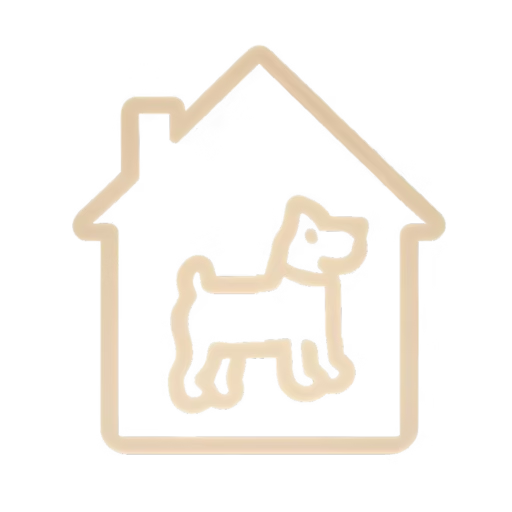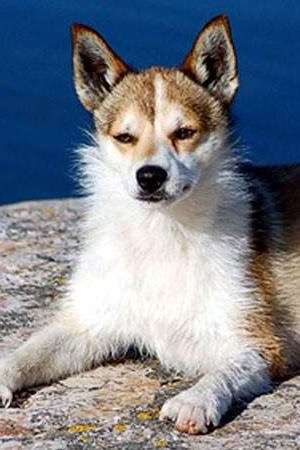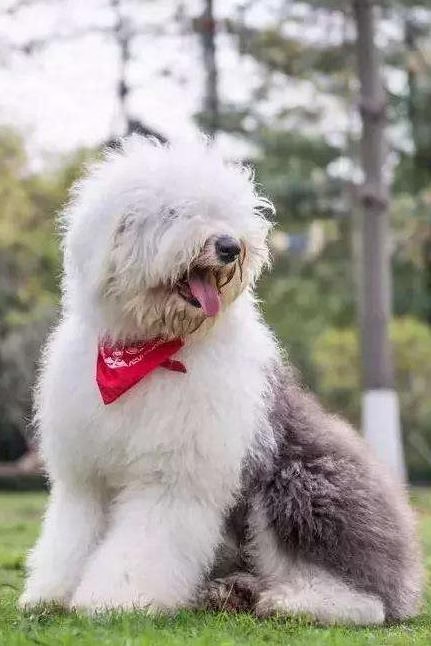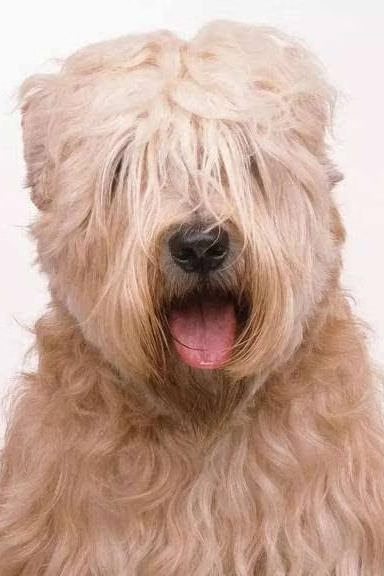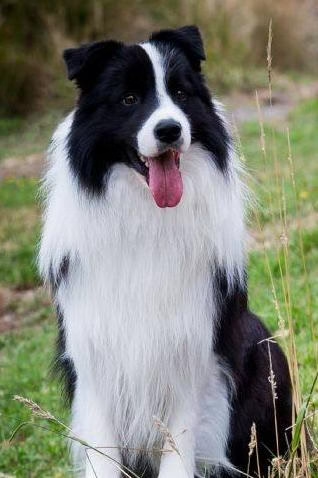Cane Corso (Cane Corso Dog)
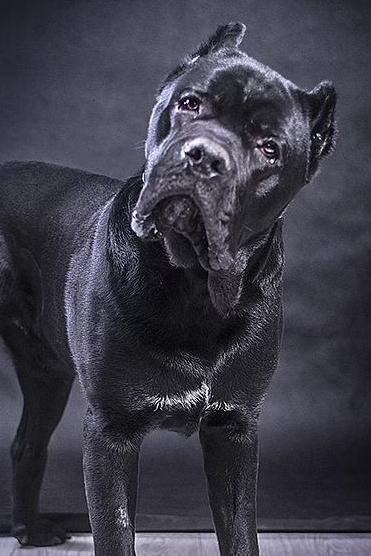
Cane Corso
Cane Corso Dog
Basic Information
- Category: Pet Dog
- Origin: Italy
- Body Type: Large
- Height: 60-68cm
- Hair Length: Short hair
- Lifespan: 11-12 years
Ratings
| Trainability | ⭐️⭐️ |
| Affection Level | ⭐️⭐️ |
| Barking Level | ⭐️⭐️⭐️ |
| Shedding Level | ⭐️⭐️⭐️ |
Introduction to the Cane Corso Breed
The Cane Corso, with the English name canecorso, gets its name from the Latin word “cohors”, which means “guardian, protector of livestock.” Originating in Italy, the Cane Corso is a descendant of the ancient fierce dog named “Mollosser” and is an improved breed of the ancient Italian mastiff with a history of more than 2000 years. It is a native dog of Italy and is now mainly used as a military and police dog.
It belongs to a standard large and fierce dog breed, with a valiant temperament, and extremely strong courage and tenacity. This improved large and fierce dog did not survive on the Italian mainland in the past but was bred on the island of Sicily.
It is a compact mastiff breed, so it has the explosive power of a mastiff and, at the same time, has more endurance than the average mastiff. In the past, it was mainly used to drive cattle to the slaughterhouse and bite the cattle to facilitate the butchering by the butcher. In addition, it was often used to hunt large wild animals such as wild boars. It is agile and quick in response.
The most glorious history of the Cane Corso is that it once served in the ancient Roman army, accompanying and guarding its masters as they charged into battle on the battlefield.
Today, the Cane Corso has been trained to be an excellent guard dog. It is very loyal to its owner’s family and very aloof towards strangers. Its innate excellent guarding ability enables it to accurately distinguish between friends and foes.
The Development and Origin of the Cane Corso
The historical origin of the Cane Corso is intertwined with the history of Italy, with glorious and arduous experiences. Unfortunately, this breed was on the verge of extinction many years ago, resulting in a sharp decline in its population. In fact, the current number of Cane Corsos in existence is quite small. However, all that has happened in the past cannot erase their significant historical significance and portrait background.
The direct ancestor of the Cane Corso is the “Canis Pugnax”, a fierce dog in ancient Rome. In the hunting of large wild beasts, Canis Pugnaxs were agile attack dogs; and in war, they were the auxiliary attackers of the warriors. For many years, the Cane Corso has been a loyal and considerate companion dog for Italians. This large-sized dog with typical Mastiff appearance characteristics is the common ancestor of the Cane Corso and the Neapolitan Mastiff.
The dog breeds in ancient Rome all had certain functions. A more lightweight, quicker-moving, and elegant dog breed with similarities to other Mastiffs was born on the periphery of the large but clumsy Mastiff group. This new breed of dog was used by the Romans for hunting and guarding livestock.
There is currently no exact definition of the etymological meaning of the name Cane Corso. However, some evidence-based assumptions imply the Greek origin of the Cane Corso: KORTOS = “wall” in Latin. COHORS = guardian of the courtyard. And up to now, the oldest citation of the name Cane Corso appears in poems and essays from 1500 years ago. In 1998, the A.I.C.C. or the Italian Cane Corso Federation published a study on this breed of dog, which confirmed the military use of the Cane Corso in the book. In 1137 in MonopolidiSabina (an area near Rome), people found the kennel of that era, thus bringing this breed of dog closer to the history of Rome. The Cane Corso retains the results of the natural selection of the breed over several centuries, with not too much human interference, so it is a breed of dog that is very close to natural reproduction. In that difficult era, this breed of dog could successfully survive entirely due to its unique working ability, and people chose to breed them only out of economic considerations at that time. Because one had to work to get food.
They have lived in the human social environment from the past to the present, so they deeply understand that if necessary, they must take immediate action and are very understanding. And it is precisely because of their such ability that they have been able to survive to this day. In the small colonies in southern Italy, people still keep Cane Corsos to maintain the ancient agricultural farming.
It was not until 1976 that Dr. Breber, after studying the folklore in the Italian countryside, published a series of attention-grabbing articles in the journal of the Italian Kennel Club. It was these texts that brought the Cane Corso back to the public and official dog lover circles. Later, he contacted some enthusiastic dog lovers who had been in touch with him during this period and launched an action to save the Cane Corso. In October 1983, these people established the S.A.C.C (Italian Cane Corso Social Federation).
The continuous breeding and the funds required for breeding made this organization become centralized. For this reason, the two vice presidents, Mr. Oreste Savoia and Mr. Flavio Bruno, successively withdrew from the organization. During this period, the SACC has been committed to improving the social prestige of the Cane Corso and has indeed achieved some good results. Unfortunately, Basir lacked the characteristics of stable inheritance in the subsequent breeding process, so the appearance of its descendants was different from his. And up to now, the appearance of the Cane Corso is still far from the ideal. At that time, the SACC successfully organized gatherings of dog lovers, enabling the Italian Kennel Club to test the Cane Corso and standardize the breeding standards.
ConvegnonazionalediCivitellaAffadena, June 16, 1990, this was not only a gathering of enthusiastic breeders (including Breber) but also the first officially recorded gathering. In 1992, in order to better develop the breeding cause of the Cane Corso, the Italian Kennel Club decided to record the birth date of Corsi as the beginning of the purebred bloodline breeding of the Cane Corso. Some informal books also record that the purebred bloodline was started on January 20, 1994. Driven by their enthusiasm, curiosity, and understanding of this breed of dog, more and more Cane Corso enthusiasts and breeders uncontrollably bred a large number of Cane Corso puppies, which affected the average quality of the Cane Corso. At that time, the SACC organization did not make any control or restraint on this phenomenon. Soon, the number increased sharply from the original dozens to 2500 registered dogs per year. They did not pay attention to the quality of the Cane Corso at all but only pursued quantity.
The result of this choice affected the morphological development of the Cane Corso. On May 22, 1996, an excellent Cane Corso gathering was held in Arese, and CH Boris was selected as the breeding model of the F.C.I Cane Corso standard in terms of quality. In November, the Cane Corso passed the international certification. This seemed to be the result of quality improvement, but it further deteriorated the breeding of the Cane Corso because people outside Italy also got to know the Cane Corso. Enthusiastic people would feel fresh about this newly emerged breed of dog and would breed it aimlessly and without a plan.
In July 1999, after many years of written suggestions and repeated appeals against the SACC, the Italian Club changed the SACC into an official Cane Corso club. In order to eliminate the deteriorating trend of Cane Corso breeding, Cane Corso enthusiasts established their own A.I.C.C.
The Suitable Owners of the Cane Corso
The Cane Corso is physically strong and of a huge size, and it is very good at guarding. It is not suitable for being kept in an apartment, nor is it suitable as a family pet dog.
The Measurement Standards of the Cane Corso
Overall: The Cane Corso is a standard large and fierce dog. It does not have the loose skin that the Italian Neapolitan Mastiff has due to geographical and genetic relationship characteristics. This dog is strong and powerful, with a typical huge skull and joints. The length of the head is about 36% of the height at the withers. The width of the skull is slightly more than the length. The front is in a spherical arch shape and gradually becomes flat towards the occipital bone at the back. The stop is very obvious, that is, there is a distinct depression slightly below the glabella.
The skin around the corners of the mouth is relatively tight. When observed from the front, the upper lip forms an inverted U shape. When observed from the side, the mouth is wide, powerful, and thick. There is a slight underbite. The lower jaw is very powerful. When observed from the side, it is slightly curved. The lower jaw protrudes outward, giving it a prominent appearance. The lower teeth protrude slightly outward and have a certain distance from the upper teeth, so the bite is an underbite.
The body of the Cane Corso is slightly rectangular, that is, the body length is slightly greater than the height at the withers. The coat of the Cane Corso is not as rough as that of the Neapolitan Mastiff. It is a short hair that is approximately smooth but not particularly soft. A small amount of undercoat is allowed. The fur colors are black, blue, yellow, and the gradient colors between them. The colors of the nose and eyes can change with the color of the body hair. Various brindle colors are common. However, the black and red interlaced color similar to that of the Doberman and Rottweiler is not allowed. A white patch on the chest is allowed, and white spots on the toes are also allowed. A few white hairs do not count as a white spot.
The minimum height for a male is 27 inches (70CM), and for a female, it is 24 inches (60cm). The minimum weight for an adult male is 100 pounds (45KG), and for a female, it is 80 pounds (36KG). A slightly larger size is also acceptable, but the premise is that it will not affect its working ability and athletic ability.
The front chest is deep and wide, and the bottom of the chest is lower than the elbow joint. The ribs have a good degree of outward expansion; the back line is straight and should not appear very weak. The back line smoothly extends towards the hips and appears slightly rounded when viewed from the side. The abdomen is tucked up.
Head: The head is wide and strong, and the appearance looks extremely aggressive. The skull is flat. When viewed from the top of the head, the edges of the skull are parallel, and there is an obvious stop.
The nose must be black. Only when the coat is blue is a dark gray nose allowed.
Eyes: Of medium size, they must have the same eyeliner color as the coat. Dark-colored eyes are the best, but the color is also allowed to change with the color of the coat. The eyes are closely set under the brow bone. Although the lower eyelid can be exposed in all types of Mastiffs, it must look very intelligent and alert.
Ears: Ear cropping is allowed. The size can vary from being closely attached to the skull to an equilateral triangle. Not cropping the ears is also allowed, so it is not considered a disqualification or defect.
Jaw/Teeth: The length and width of the muzzle are approximately equal. The muzzle should not exceed 34% of the total length of the head. When observing the muzzle from the front, it is found that its cross-section is very similar to a trapezoid (the bottom should be wider). The lips are thick, and the upper lip should droop slightly and cover the lower jaw, so that the lower contour of the muzzle looks like it is outlined by the upper lip. The lips must be dark in color. An underbite within 5mm is the most suitable. An underbite within 10mm, a level bite, or a scissor bite are all allowed. An overbite is a disqualification. The best situation is to have all the teeth intact.
Neck and Body:
The top line of the neck is slightly curved. The length of the neck is equal to the length of the head. It is strong and muscular, with a distinct separation point from the back. The skin at the bottom of the neck has a dewlap structure, but an excessive dewlap is not allowed to be shown
The waist is short and wide, well combined with the back and hips, and has well-developed and strong muscles. The chest is wide, with a very obvious slope, and the muscles are well-developed.
Back: The back is straight. The withers are very obvious and rise from the back line, higher than the hips. It is wide and muscular and gradually rises in the direction from the back line to the neck.
Limbs: The shoulders must have strong muscles and be able to move flexibly when sitting back. The elbows are very straight and close to the body. The front legs should also be straight and have a large bone mass. The joints are straight and move freely.
The hind part must be wide, well-developed, and have well-developed muscles. The hind legs must be moderately long and powerful. The angle of the stifle joint must be appropriate, and the overall appearance should be pleasing to the eye. The hock joint is inclined downward and must be parallel when viewed from the back.
The toes are compact and closed. The feet are oval in shape, with thick pads, and the toes are well curved.
Hips: The hips are long and wide, round in shape due to the well-developed gluteal muscles, and slightly inclined.
Tail: The root of the tail is set high, forming an extension of the back line. It is usually docked at one-third of its total length. The tail can be raised when the dog is happy.
The coat is short and dense. In cold weather, the Cane Corso may grow a dense undercoat.
Colors: Black, blue, chestnut, light yellow, and stripes composed of any of the previous colors. A tea-colored dog usually has a black mask. White patches on the chest, chin, toes, and hind knees are allowed.
Gait: The movement of the Cane Corso must be full of power and smooth. The front legs must take large strides, and there are very few forceful jumps and other excessive movements. When observed from the front, each step has a large stride, and the two feet are kept parallel during the movement. When viewed from the side, the back line always remains horizontal. There is a slight sway or jump, and the footprints are approximately in a straight line. It moves flexibly and is very confident.
The Feeding Method of the Cane Corso
- First of all, it should be reminded that it is not recommended to keep the Cane Corso on the balcony or in a cage. This behavior will be detrimental to the physical and mental development of the Cane Corso; especially for those who are just starting to keep a dog, most of them will, out of concern about the Cane Corso’s bad behaviors such as defecating and urinating everywhere, shedding hair, or gnawing on things, and without knowing how to train them, have no choice but to lock it up.
- As for the Cane Corso, although it belongs to the fierce dog type, it also has its quiet and gentlemanly side and is still very suitable for being kept at home. Create a warm living environment for it at home, such as a dog house or a blanket (if possible, you can also prepare a sofa for it in the living room. It is best to cover the blanket and the sofa with covers for easy washing and changing), then it will definitely be happy to stay at home.
- The Cane Corso has deep feelings for its owner and is very loyal. So it is best to regard the Cane Corso as your own child. Spend more time playing with it, getting close to it, and talking and communicating with it. Then naturally, the Cane Corso will quickly trust you and recognize you as its owner.
- The Cane Corso has a strong ability to understand, is lively and enthusiastic, and is very obedient to its owner. Therefore, these characteristics determine that the Cane Corso is very easy to train. As long as the method is appropriate, it will soon become an obedient and intelligent companion dog.
The Identification and Selection of the Cane Corso
Characteristics of the Cane Corso
The Cane Corso has very obvious and typical huge skulls and joints. The length of the head is about 36% of the height at the withers. The width of the skull is greater than the length of the skull, and there is a distinct depression below the glabella. The skin around the corners of the mouth is very tight, and the upper lip is in an inverted “U” shape. The body of the Cane Corso is slightly rectangular, with the body length slightly greater than the height at the withers. The fur of the Cane Corso is basically black, looking relatively smooth, but it is a short hair that is not very soft. A small amount of miscellaneous hair on the body is allowed.
The minimum height of an adult male Cane Corso is at least 70cm, and the minimum weight is 45kg; the minimum height of an adult female Cane Corso is 60cm, and the minimum weight is 36kg. There can be a slight difference from the standard size, but it should not be too large, otherwise, it will affect the working ability and athletic ability of the Cane Corso. The body length of the Cane Corso must be 10% greater than the height at the withers so that it can have a good balance. It must move with full strength, and the whole movement should be coordinated and smooth. When viewed from the side, the back remains horizontal during walking.
